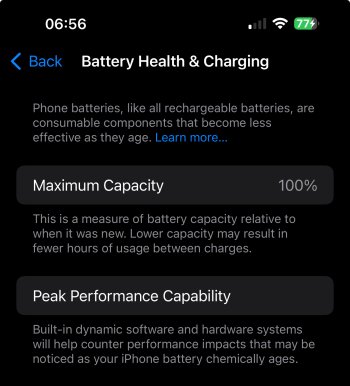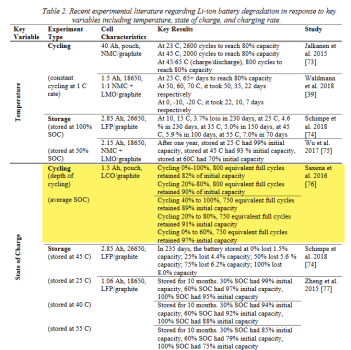I just bought a 14 PM but I supposed this topic is also applicable to other phones of recent models. The more I read abt preserving batt life the more confusion tossed up. So I’m coming here to seek clarification which I believed some tech geeks here are knowledegable.
Whats the best way to charge 14 PM to preserve the battery. This is what I gathered fr the general consensus fr google articles (I understand some could be also unrealiable).
1) charge between the range of 20% to 80%. Once its down to 20% can begin charging. Don’t wait till almost zero. And once it reaches 80% stop charging. Don’t full charge to 100%. Can someone explain the logic behind the 20-80%. Is the 20-80 rule accurate?
2) As far as possible always use a slow charger like 5w. Why? It seems fast chargers are all marketing hype, kinda a race whose brand is faster. I recently spoke to an Apple staff and he said the sweet spot is abt a 20w charger. A slower charger will in fact make the battery struggle for juice and will render the battery more harm than good.
3) Don’t charge overnight. But if it’s a slow charger, why not?
Lastly, on a normal day if one is not in a hurry neither do wanting to wait to long, whats the best wattage (or sweet spot) for a charger for 14 PM.
Tks so much
Whats the best way to charge 14 PM to preserve the battery. This is what I gathered fr the general consensus fr google articles (I understand some could be also unrealiable).
1) charge between the range of 20% to 80%. Once its down to 20% can begin charging. Don’t wait till almost zero. And once it reaches 80% stop charging. Don’t full charge to 100%. Can someone explain the logic behind the 20-80%. Is the 20-80 rule accurate?
2) As far as possible always use a slow charger like 5w. Why? It seems fast chargers are all marketing hype, kinda a race whose brand is faster. I recently spoke to an Apple staff and he said the sweet spot is abt a 20w charger. A slower charger will in fact make the battery struggle for juice and will render the battery more harm than good.
3) Don’t charge overnight. But if it’s a slow charger, why not?
Lastly, on a normal day if one is not in a hurry neither do wanting to wait to long, whats the best wattage (or sweet spot) for a charger for 14 PM.
Tks so much
Last edited:








